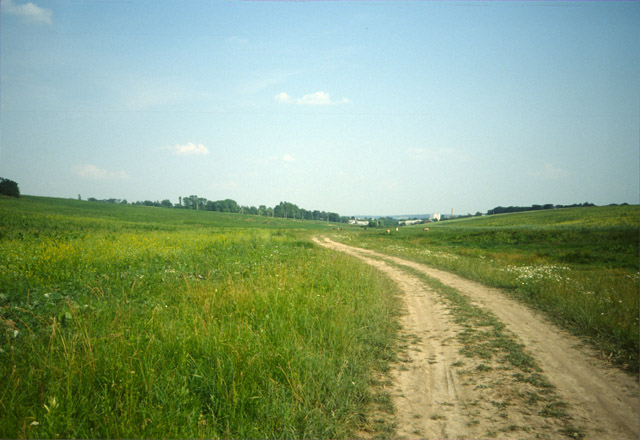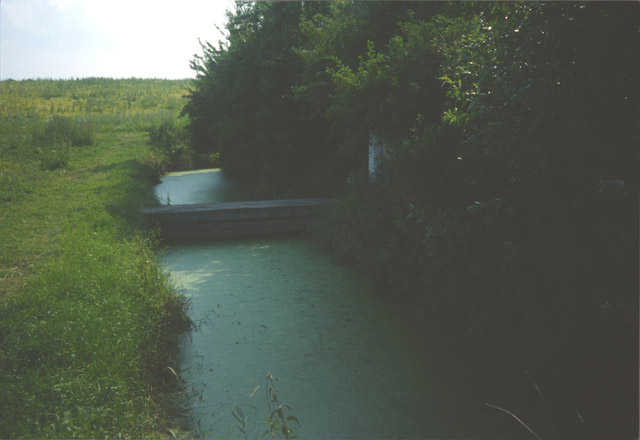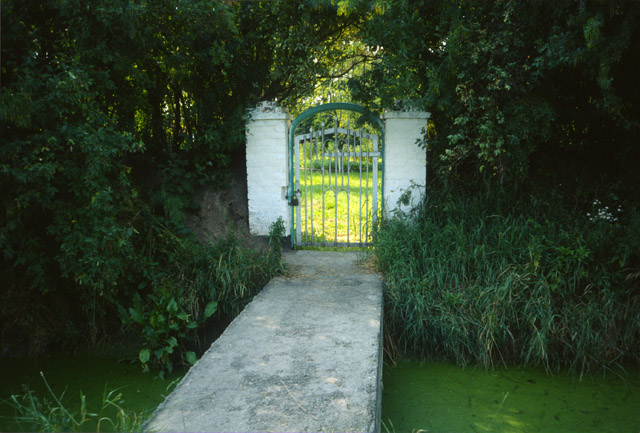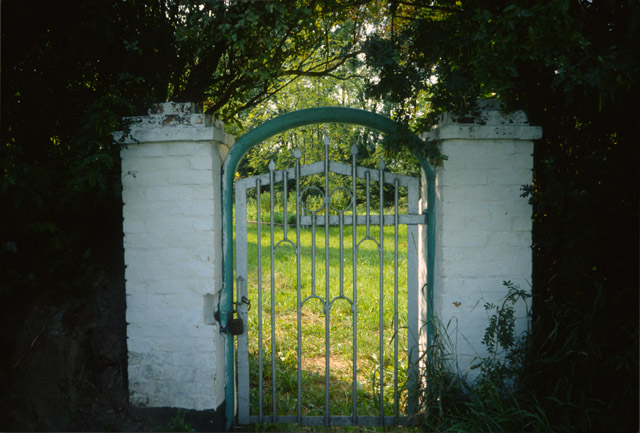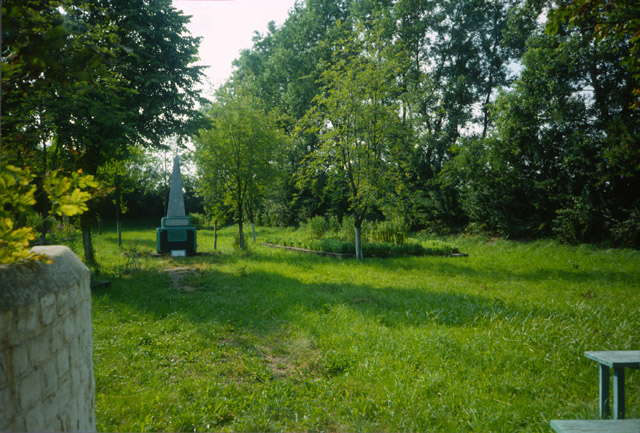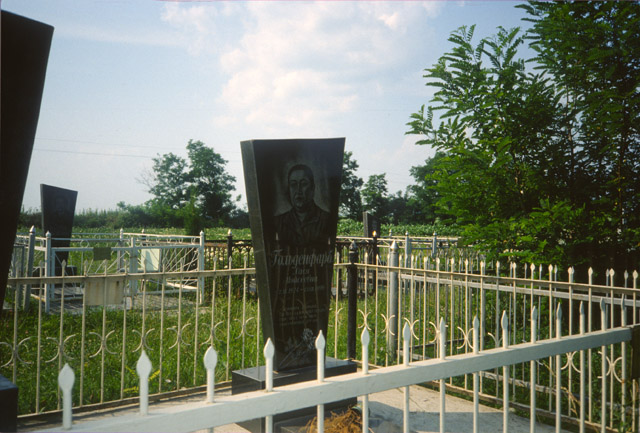 Alternate names: Bar [Rus-Бар, Ukr-Бар, Yid]. 49°04' N, 27°40' E, 39 miles WSW of Vinnytsya (Vinnitsa), 43 miles N of Mohyliv-Podilskyy. 1900 Jewish population: 5,773. JewishGen Ukraine SIG. A small trade outpost named Row, in the 16th century, Polish Queen Bona Sforza founded a fortress above the river. In 1540, Polish King Sigismund I the Old granted city rights to the nearby town. After 1922 the city was part of the Ukrainian Soviet Socialist Republic, and since 1991 in independent Ukraine. Located on the Rov River in the Vinnytsia Oblast (province) of western Ukraine, Bar is the administrative center of Barskyi Raion and part of the historic region of Podolia. 1900 Jewish population: 5,773. Located now in Horodok Raion, west of L'viv and in the Podolia Province 1890 - 1925 on the Rov River in the Vinnytsia Oblast (province) of central Ukraine. administrative center of the Bar Raion (district) and part of the historic region of Podolia. The 2005 estimated population was 17,200. 2013 population was about 16,442 [August 2009]
Alternate names: Bar [Rus-Бар, Ukr-Бар, Yid]. 49°04' N, 27°40' E, 39 miles WSW of Vinnytsya (Vinnitsa), 43 miles N of Mohyliv-Podilskyy. 1900 Jewish population: 5,773. JewishGen Ukraine SIG. A small trade outpost named Row, in the 16th century, Polish Queen Bona Sforza founded a fortress above the river. In 1540, Polish King Sigismund I the Old granted city rights to the nearby town. After 1922 the city was part of the Ukrainian Soviet Socialist Republic, and since 1991 in independent Ukraine. Located on the Rov River in the Vinnytsia Oblast (province) of western Ukraine, Bar is the administrative center of Barskyi Raion and part of the historic region of Podolia. 1900 Jewish population: 5,773. Located now in Horodok Raion, west of L'viv and in the Podolia Province 1890 - 1925 on the Rov River in the Vinnytsia Oblast (province) of central Ukraine. administrative center of the Bar Raion (district) and part of the historic region of Podolia. The 2005 estimated population was 17,200. 2013 population was about 16,442 [August 2009]
From 1796 to the 1917 Russian Revolution, Bar was a district capital in the province of Podolia. Jews were first mentioned in 1542. An agreement concluded in 1556 with the citizens of Bar permitted Jews could own buildings and had the same rights as the other residents including the ability to do business in other towns in the district. However, they were forbidden to lodge Jewish visitors. In the second half of the 16th and the first half of the 17th century, Jews from Bar traded as far away as Moldavia. 1648 Bar Jewish population was about 600 families. The Chmielnicki uprising in 1648 massacred many of the Jews in Bar followed by further slaughter by Cossacks and Tatars in 1651. In 1717, a synagogue was permitted. Jewish population was 4,442 in 1847, 5,773 in 1897 (58%), and 10,450 (46%) in 1910. Between 1910 and WWI, Jewish factories dealth in agricultural products (sugar, linen, tobacco, and vodka) and owned most of the shops in town. 20 Jews died during a pogrom in the summer of 1919. Establishment of the Soviet government disrupted Jewish life. Jewish population was 5,270 in 1926 (55%) and 3,869 out of 9406 in 1939. The Germans occupied Bar on July 16, 1941 and created two ghettos in December. On August 19, 1942, 3,000 Jews from the first ghetto were kept for three days without food and water until, in the nearby Jewish cemetery, 1,742 Jews were murdered. The remainder, mostly youth, were taken to the abandoned ghetto that was turned into a work camp. On October 15, 1942, the 2,000 Jews of the second ghetto were murdered. Most of the slave laborers died one by one from hunger or diseases. Bar was liberated on March 25, 1944. In 1993, 199 Jews lived there. [August 2009]
- JewishGen Ukraine SIG
- Shtetl Finder (1989), p. 3: "Bar, Ber".
- Encyclopedia of Jewish Life (2001), p. 86: "Bar".
- nearest town is Vinitsa mentioned in "The Road from Letichev" authored by David A. Chapin and Ben Weinstock.
- Jewish history [Feb 2015]
- Ghetto
YAD VASHEM: "Jews began to settle in Bar in the first half of the sixteenth century, making the community one of the oldest in Ukraine. The Jews of Bar suffered greatly during the uprising of Bogdan Chmelnitsky (1648-1649), and in the eighteenth century during the uprising of the Haidamaks.
During the pogroms of the Russian Civil War (1918-1920), carried out by the White Army troops of Anton Denikin and the Ukrainian Army of Symon Petliura, several dozen Jews were murdered. In the Soviet period, a Yiddish school operated in Bar and the Jewish Yidishe poyer kolkhoz was established. The last great synagogues of Bar were closed by the Soviet authorities in the mid-1930s. During that time, most Jews were employed as office workers, artisans or in the three small, local factories. In 1939, the number of Jews in Bar stood at 3,869, 41 percent of the total population." [Feb 2015]
CEMETERY:
Yad Vashem: "The Germans occupied Bar on July 16, 1941, together with Romanian and Italian troops. In September 1941, Romanian-controlled Transnistria was established, with its border close to Bar. While Bar itself remained under German administration, the Bar railway station belonged to Transnistria. On December 20, 1941, three ghettos were established in the town; two of them later merged. In the autumn of 1941, Jews from neighboring localities were brought to Bar, together with deportees from Bessarabia and Bukovina, to join the local Jews in the ghettos.
In August 1942, rumors of an impending murder operation spread through one of the ghettos. Several dozen families believed the reports and fled to Romanian-controlled Kopaigorod, where they survived. Most of the ghettos' inhabitants were shot in two major murder operations in August and October 1942. The Red Army liberated Bar on March 24, 1944." [Feb 2015]
- Murder Sites:
- The Garmaki Road
- Ivanovetskoye
- The Jewish Cemetery
- Commemoration: Commemoration of Jewish Victims
BAR I: US Commission No. UA01230101
Alternate names: Ber (Yiddish) and Pob (Polish). Bar is located in Vinnitskaya at 49º40 27º40, 62 km from Vinnitsa. The cemetery was located at Kotsubinski Alley but was liquidated by Soviets in 1978. Present town population is 5,001-25,000 with 101-1,000" Jews.
- Officials: Regional Executive Council of Sokolovski Stepan Ivanovich [ph: (043410) 3134]. Barski Regional Executive Council of Deputy Chairman-Kotlysh Anatoli Ivanovich [ph: (043410) 2463]. Vinnitska Oblast Council of Melnick Nikola Evtykhovich [ph: (0432) 327540]. Town: Architect of Mashbakh Roman Alexandrovich [ph: (043410) 4096].
- Others: Vinnitska Oblast Cultural Society of Ilchyk Nikola Nikolayevich [ph: (0432) 325637] Vinnitska Oblast Jewish Community of Gybenko Bella Aronova [ph: (0432) 351666].
The earliest known Jewish community was 1425. 1939 Jewish population (census) was 5270. Effecting community were 1648-49 pogrom in time of Khelnitski, 1768-72 Pogrom at time of Barskoj Confederation, and 1918-20 pogrom at time of Civil War. 19 August 1942, 9000 Jews from Bar and local villages were murdered and the village burned. The Jewish cemetery was established in the 17th century. David (Mazziel of Bar) was buried in the unlandmarked Hasidic cemetery used only by Bar. A city street reaches the isolated flat urban site by water. Access is open to all. No wall, fence, or gate surrounds the site. No 17th to 19th century stones are visible and contains no known mass graves. The municipality owns the property used for residences. Adjacent properties are residential. The cemetery boundaries are smaller now than 1939 because of housing development. The cemetery was vandalized during World War II and between 1945 and 1981. There is no maintenance now. Within the limits of the cemetery are no structures and residential. Very serious threat: vandalism.
Documentation: Town populations in Russian Empire. Podol Region. 1864; Historical Monuments in Podol Region. Kamanets-Podol. V.P.Gulman.1901; Town populations in Podol Region. Kamanets-Podol. A.Krylov. 1905; National Minorities in Ukraine. Register. Kharkiv. !925. Other documentation was inaccessible.
Oks Vladimir Moiseevich of 270065, Odessa, Varnenskaya St., 17D, apt. 52 [ph: (0482) 665950] visited site on 6/27/94 and interviewed Inhibitions in Bar. He completed survey on 27/06/1994.
BAR II: US Commission No. UA01230102
See BAR I for town information. Cemetery: Ostrovskogo St.. The Hasidic Jewish cemetery was established in 1921 with last known Jewish burial 1994. v. Matuykov (15km away) used this unlandmarked cemetery. The isolated suburban and rural (agricultural) hillside has no sign or marker. Reached by turning directly off a public road, access is open to all. A broken fence with a gate that does not lock surrounds the cemetery. 501 to 5000 stones, all in original location with less than 25% toppled or broken, date from 1921. Location of removed stones is unknown. Some tombstones have traces of painting on their surfaces, iron decorations or lettering, bronze decorations or lettering, other metallic elements, portraits on stones, and/or metal fences around graves. The cemetery contains marked mass graves. The municipality owns the property used for Jewish cemetery and agriculture (crops or animal grazing). Adjacent properties are agricultural and residential. The cemetery boundaries are larger now than 1939. The cemetery is visited frequently by organized individual tours and private visitors (Jewish or non-Jewish). The cemetery was vandalized during World War II but not in the last 10 years. Jewish individuals within country and Jewish individuals abroad re-erected stones, patched broken stones, cleaned stones and cleared vegetation. Now, there is occasional clearing or cleaning by individuals. Within the limits of the cemetery are other structures. Vegetation overgrowth is a seasonal problem preventing access. Moderate threat: vegetation. Slight threat: uncontrolled access and vandalism.
Documentation: Town populations in Russian Empire . Podol Region 1864; Historical Monuments in Podol Region . Kamanets-Podol. V.P.Gulman 1901; Town Population in Podol Region. Kamanets-Podol. A. Krylov.1905; National Minorities in Ukraine . Register. Kharkiv. 1925. Other documentation was inaccessible. Oks Vladimir Moiseevich of 270065,Oddesa, Varnenskaya St., 17D, apt. 52 [ph: (0482) 665950] visited site on 6/27/94. Residents in Bar were interviewed. He completed survey on 06/27/1994.
BAR III: US Commission No. UA01230501
See BAR I for town information. The mass grave is located in NW at end of Lenin St. Bar is 62km from Vinnitsa. The unlandmarked Jewish mass grave was dug in 1941 with last known Jewish burial 1942. The isolated suburban flat land has signs or plaques in local language mentioning the Holocaust. Access is open to all. A continuous fence surrounds the mass grave. The approximate size is now 0.01 hectares. No stones were removed. The common tombstone dates from 1948. The municipality owns the property only used for mass burial site. Adjacent properties are commercial or industrial. The mass grave is visited frequently by organized individual tours and private visitors (Jewish or non-Jewish). The site was not vandalized in the last 10 years but was frequently in the last 10 years.[sic] Now, there is occasional clearing or cleaning by authorities. Within the limits of the mass grave are no structures. Moderate threat: uncontrolled access, pollution, vegetation and existing nearby development. Slight threat: weather erosion, vandalism and proposed nearby development.
Oks Vladimir Moiseevich of 270065, Ukraine, Odessa, Varnenskaya 17d,a.52 [ph: (0482) 665950] visited site on 08/1989 and interviewed Elstershamis I.E. of Bar in 07/1994 and Shkolnik P.A. of Bar in 07/1994. He completed survey on 08/03/1995. Documentation: Vinnitsa State Oblast Archive Fond P-4422, on. 1, d. 2.; Vinnitsa State Oblast Archive Fond P- 136, on. 15, d. 88.
Photos of mass grave courtesy This email address is being protected from spambots. You need JavaScript enabled to view it.
Photos of Jewish Cemetery courtesy This email address is being protected from spambots. You need JavaScript enabled to view it.


